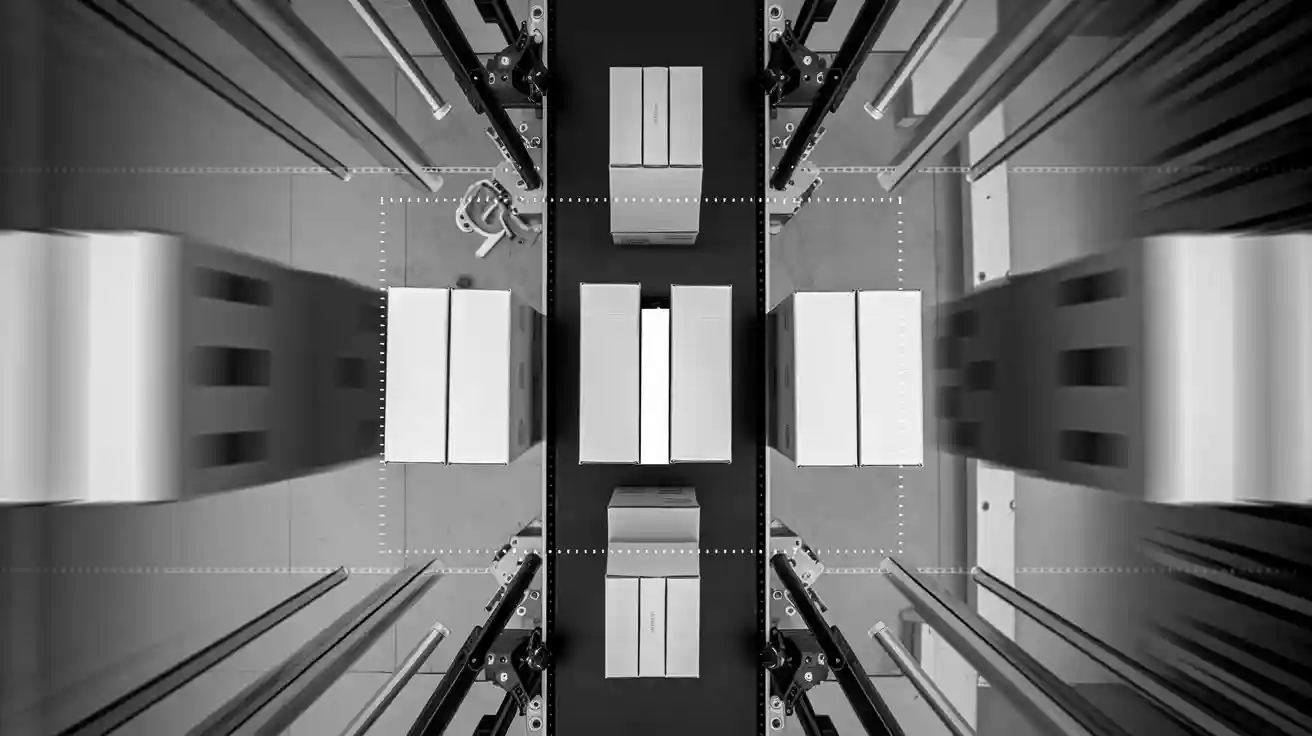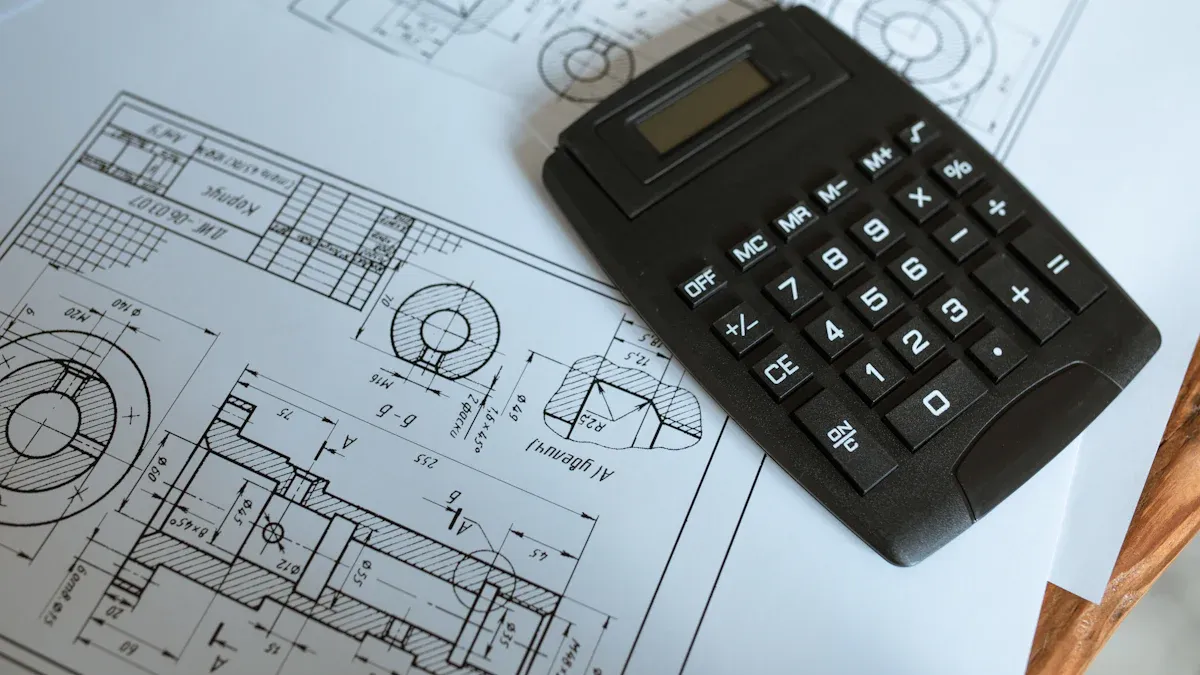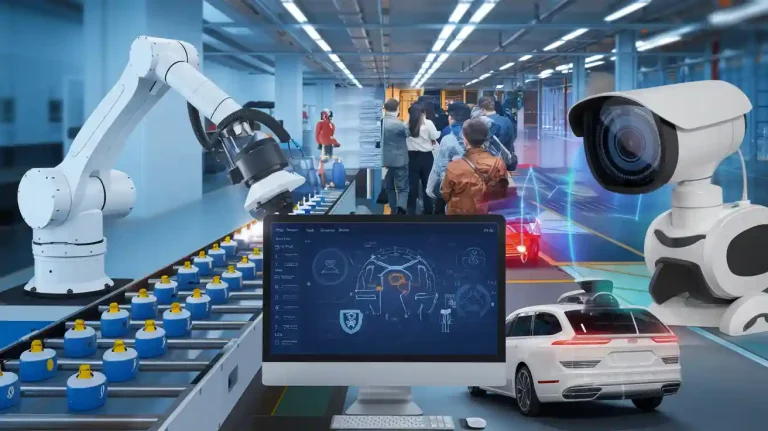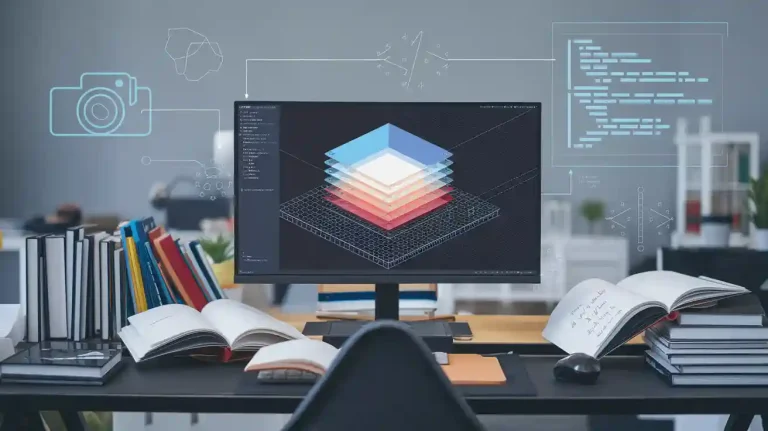
Field of view in a machine vision system means the area visible to the camera at any moment. In this context, FoV acts as the window through which the system observes its environment. A wider FoV captures more of the scene but with less detail, while a narrower FoV focuses on smaller areas with greater clarity. Selecting the right FoV is crucial for every field of view machine vision system. FoV directly affects how a machine vision system performs tasks like quality control, inspection, and automation. Industry standards highlight the need to match FoV to sensor size and application requirements. FoV also determines the efficiency and accuracy of a field of view machine vision system in real-world settings. Many systems rely on FoV to balance coverage and detail.
Key Takeaways
- Field of view (FoV) is the area a machine vision camera can see at one time and affects how well the system inspects and measures objects.
- Choosing the right FoV balances seeing enough of the scene and capturing enough detail to detect small defects accurately.
- Sensor size, lens focal length, and working distance are the main factors that determine the FoV and must be matched carefully.
- Calculating FoV with formulas helps engineers select the right camera and lens to cover the needed area with proper resolution.
- Testing the system with real objects and lighting before finalizing ensures clear images and reliable defect detection.
Field of View in Machine Vision System
What Is Field of View
The field of view in a machine vision system describes the area that the camera can see at one time. This area acts as the system’s window into the world. The field of view, often called FoV, is a key factor in how well a machine vision system performs its tasks.
The field of view serves as the "eyes" of the system. It determines what the camera can inspect, measure, or analyze. A wide field of view allows the system to see more of the scene, but it may lose detail. A narrow field of view focuses on a smaller area, capturing finer details but missing the bigger picture.
The field of view in a machine vision system works much like human vision, but with some important differences:
- 2D vision systems capture images in the X and Y directions. They cannot see depth, so they miss information about the Z-axis. This limits their ability to handle complex 3D shapes.
- 2D systems depend on good lighting. They struggle with shiny or low-contrast surfaces, which can reduce the effective field of view and accuracy.
- 3D vision systems add depth by capturing data along the X, Y, and Z axes. They use multiple cameras or sensors to build a 3D model, similar to how human eyes work together.
- 3D systems can cover more complex scenes, but they need more hardware and computing power. They also cost more and require careful setup.
- Human vision naturally combines depth and a wide field of view. Machine vision systems need special setups and controlled lighting to match this ability.
The field of view in a machine vision system is not just about what the camera sees. It also shapes how the system works. The field of view defines the area where the system can:
- Locate objects and features.
- Count items within the visible area.
- Measure distances between points, without touching the objects.
- Decode barcodes or other machine-readable codes.
The field of view fov must match the needs of the inspection or measurement task. If the field of view is too large, the system may miss small defects. If it is too small, the system may not see the whole object.
FoV and Camera Sensor
The camera sensor plays a big role in setting the field of view in a machine vision system. The size of the sensor’s active area decides how much of the image the camera can capture. Larger sensors can see a wider area for the same lens magnification. This means a bigger field of view. However, the lens must be able to cover the whole sensor. If not, the image will have dark corners or edges, a problem called vignetting.
The field of view depends on both the sensor size and the lens focal length. Increasing the sensor size increases the angular field of view for a given lens. This lets the system use more of the lens’s image circle, giving a wider field of view. The lens and sensor must work together. If the sensor is too large for the lens, the image quality drops at the edges.
Camera field of view also changes with magnification. A larger sensor diagonal gives a bigger field of view. Higher magnification shrinks the field of view. For example, a camera with a 25 mm diagonal sensor at 1x magnification can see a 25 mm area. At 40x magnification, the field of view drops to about 625 micrometers.
Industrial machine vision cameras use sensors described in inch fractions, such as 1/3", 1/2", 2/3", and 1". The sensor diagonal sets the minimum size of the lens’s image circle. For example, a one-inch sensor needs a lens with at least a one-inch image circle. If the lens image circle is too small, the field of view will be limited, and the image may be cropped or darkened at the edges.
Tip: Always match the sensor size to the lens when designing a field of view machine vision system. This ensures the system captures the full image without losing quality.
The field of view machine vision system relies on the right combination of sensor size, lens, and magnification. This balance helps the system achieve the needed coverage and detail for each application. Vision systems that use larger sensors and the right lenses can inspect bigger areas or capture more detail, depending on the task.
Why FoV Matters
Impact on Inspection
The field of view plays a critical role in inspection processes for quality control and industrial automation. A well-chosen fov ensures that the camera captures the right area for inspections, balancing coverage and detail. If the field of view is too wide, the system spreads pixels over a larger area, which lowers pixel density and reduces defect detection accuracy. A narrower fov increases pixel density, allowing the system to spot smaller defects, but it may miss parts of the object that fall outside the view. The field of view also affects image file size and processing speed. Larger images from a narrow fov require more storage and slow down inspection processes, which can impact real-time quality control in industrial automation.
A balanced field of view helps vision systems maintain both speed and accuracy during inspections. Focusing on regions of interest and using faster hardware can help keep inspection processes efficient without sacrificing defect detection.
The table below shows how different factors related to the field of view impact machine vision inspection:
| Factor | Effect of Field of View (FOV) | Impact on Machine Vision Inspection |
|---|---|---|
| Pixel Density | Wider fov spreads pixels over larger area, lowering density | Reduces image detail, lowering defect detection accuracy |
| Resolution | Narrower fov concentrates pixels on smaller area, increasing detail | Improves accuracy in detecting small defects |
| Image File Size | Higher resolution or narrower fov increases image size | Requires more processing power and storage |
| Processing Speed | Larger images slow down processing and reduce frame rate | Slows inspection speed, affecting real-time throughput |
| Working Distance & Lens | Lens choice and distance affect focus and sharpness within fov | Influences image clarity and inspection quality |
| Optimization Techniques | Use of ROI processing, faster hardware, and balanced sensor/lens/lighting | Helps maintain speed while achieving accuracy |
FoV and Resolution
The relationship between field of view and resolution requirements shapes the effectiveness of quality control in industrial automation. The field of view covers the area that must be inspected, while resolution determines how much detail the system can capture within that area. A larger field of view allows the camera to see more of the object, but it reduces the resolution per unit area. This makes it harder to detect small defects. A smaller fov increases the detail captured, making it easier to spot tiny flaws, but it limits the coverage.
- The field of view must cover all features that need inspection.
- Sensor size and lens magnification set the field of view. Increasing sensor size increases the field of view, while reducing it decreases the field of view.
- Resolution measures how well the system can reproduce object detail. Features that are too close together may not be resolved if the field of view is too large.
- Higher resolution sensors can capture finer details within the same field of view, but only if the optics support that level of detail.
- There is always a trade-off: a larger field of view covers more area but may reduce the ability to detect small defects, while a smaller field of view increases detection sensitivity.
The minimum detectable object size depends on the field of view. For example, with a 60 mm field of view, 1200 pixels in the Y-direction, and a minimum detectable size of 2 pixels, the smallest object the system can detect is 0.1 mm. Increasing the field of view increases the minimum detectable size, making it harder to find small defects. Decreasing the field of view allows the system to capture more detail, improving defect detection and overall image quality.
Factors Affecting Field of View
Sensor Size
Sensor size plays a major role in determining the field of view in machine vision systems. Larger sensors capture a wider field of view for the same lens. Smaller sensors narrow the fov, showing less of the scene. Common sensor sizes include 1", 1/2", 1/3", and 1/4". These names come from old video camera tubes, not actual measurements. For example, a 1" sensor has a diagonal of about 16 mm. Engineers often use pixel counts and pixel pitch for precise field of view calculations. The crop factor compares sensor size to a full-frame sensor. A higher crop factor magnifies the image and narrows the fov. Understanding sensor size helps select the right lens and ensures the field of view matches the application.
Lens Focal Length
The focal length of a lens directly affects the field of view. Shorter focal lengths give a wider fov, letting the camera see more of the scene. Longer focal lengths create a narrower field of view, focusing on smaller areas with more detail. The formula FOV = 2 × arctan(sensor size / 2f) shows this relationship. For example, an 8 mm lens can capture the full width of a conveyor belt from a set distance, providing a wide fov. Standard lenses have focal lengths around 50 mm, while wide-angle lenses are below 50 mm. Telephoto lenses go above 50 mm and offer a narrow field of view for detailed inspection. Zoom lenses allow changing the fov, but may reduce resolution. Telecentric lenses keep magnification constant, which helps with precise measurements.
Working Distance
Working distance means the space between the camera lens and the object. This distance changes the field of view. As working distance increases, the fov grows larger, letting the camera capture more of the object. The relationship is almost linear. For example, doubling the working distance nearly doubles the field of view, if the lens and sensor stay the same. The formula FOV_l = 2 × (WD × tan(θ/2)) links working distance, angular field of view, and linear field of view. Adjusting working distance helps fit the whole product into the camera’s view, which is important for both small and large items.
Angular Field of View
Angular field of view describes the angle that the camera can see through the lens. The formula FOV = 2 × arctan(sensor size / 2f) calculates this angle. A larger angular field of view means the camera sees more of the scene. Wide-angle lenses increase the angular fov, while telephoto lenses decrease it. Rectilinear wide-angle lenses keep straight lines straight, which helps reduce distortion. Fisheye lenses can show even more, but they bend lines and cause barrel distortion. The choice of lens affects the angular field of view and image quality. In machine vision, a well-chosen angular fov helps detect, identify, and measure objects accurately.
Note: Product size, working distance, and lens selection all influence the field of view. For long products, the width is key. For small products, the field of view must cover the entire surface in one frame. Matching the sensor, lens, and working distance ensures the system captures the right area for inspection.
| Factor | Effect on Field of View (FOV) | Practical Impact |
|---|---|---|
| Sensor Size | Larger sensors = wider FOV | Captures more of the scene |
| Focal Length | Shorter focal length = wider FOV | Sees larger area, less detail per area |
| Working Distance | Greater distance = larger FOV | Fits bigger objects in one image |
| Angular FOV | Larger angle = wider FOV | Improves coverage, may affect distortion |
Calculate Field of View FoV

Basic Formula
To calculate the field of view in a machine vision system, engineers use simple formulas. The field of view depends on the sensor size, lens focal length, and working distance. Using the right formula helps ensure the camera captures the correct area for inspection or measurement.
Here is a table showing the most common formulas:
| Parameter / Formula | Expression / Description |
|---|---|
| Field Width | Field Width = (Sensor Width × Working Distance) / Focal Length |
| Field Height | Field Height = (Sensor Height × Working Distance) / Focal Length |
| Angle of View (FoV) | Field Angle of View = 2 × arctan((Sensor Dimension / 2) / Focal Length) |
| Magnification (M) | M = Sensor Size / Field of View |
| Distance Calculation | Distance = (Field Width × Focal Length) / Sensor Width |
Note: Always use the same units for sensor size, focal length, and working distance. For example, use millimeters for all measurements.
Small errors in sensor size or focal length can cause large mistakes in the field of view calculation. Double-check all values before finalizing the design.
Step-by-Step Example
A step-by-step approach helps engineers calculate fov for a real-world application. Here is a simple example:
-
Define the smallest feature to detect.
Suppose the smallest feature is 0.25 mm. -
Set the required field of view.
The object to inspect measures 40 mm wide and 30 mm tall. -
Decide the number of pixels needed across the smallest feature.
Many engineers use 4 pixels per feature for reliable detection. -
Calculate spatial resolution.
Spatial resolution = Feature Size / Desired Pixels
0.25 mm / 4 = 0.0625 mm/pixel -
Calculate required image resolution.
Field Width / Spatial Resolution = 40 mm / 0.0625 mm = 640 pixels
Field Height / Spatial Resolution = 30 mm / 0.0625 mm = 480 pixels -
Choose a camera with at least 640 × 480 pixels.
Select a sensor that meets or exceeds this resolution. -
Calculate magnification.
Magnification = Sensor Width / Field Width
If the sensor width is 6.4 mm, then 6.4 mm / 40 mm = 0.16x -
Estimate lens focal length.
Use the formula:
Focal Length = (Sensor Width × Working Distance) / Field Width
If working distance is 200 mm:
Focal Length = (6.4 mm × 200 mm) / 40 mm = 32 mm -
Select a lens with a focal length close to 32 mm.
Make sure the lens matches the sensor size and mount.
Tip: Test the complete system with real objects and lighting before finalizing the design. This helps avoid blurry images or missed defects.
Choosing the Right FoV
Selecting the appropriate fov for a machine vision task requires careful planning. The field of view should cover the entire area that needs inspection, often slightly larger than the object. This ensures the camera captures all necessary details.
Key points to consider:
- The field of view depends on the combination of lens and camera sensor.
- Working distance must allow the camera to focus sharply on the object within the field of view.
- The lens image circle must fully cover the sensor to avoid dark corners or vignetting.
- The lens type should match the application. For example, telecentric lenses help with precise measurements by reducing distortion.
- The focal length should fit the working distance and required field of view.
- Camera resolution and lens quality must balance for clear images.
- Mounting compatibility between camera and lens is essential.
Common mistakes in field of view calculations include:
- Overlooking object size, smallest feature detection, or working distance.
- Confusing working distance with field of view.
- Changing sensor size late in the design process.
- Ignoring lens-camera compatibility or lighting effects.
- Not leaving enough space for camera and lens installation.
Callout: List all requirements before starting. These include object size, working distance, sensor size, and lighting needs. Match lens focal length, sensor size, and working distance using the formulas above.
Application requirements influence the field of view selection:
- Wide field of view suits conveyor belt inspections or autonomous vehicles, where the camera must see large areas.
- Narrow field of view with higher magnification fits barcode reading or inspecting small parts.
- Adjustable or zoom lenses help in environments with changing object sizes.
- For fixed-position inspections, the field of view should be just larger than the object.
- For complex environments, such as robotics or navigation, a wide angle of view is needed to detect all hazards.
Selecting the appropriate fov improves efficiency and accuracy. The right field of view ensures the system captures the correct area with the needed detail for each application.
Selecting the correct fov in machine vision shapes success in quality control and industrial automation. The table below highlights key parameters:
| Parameter | Description | Relation to FoV |
|---|---|---|
| Field of View (FoV) | Area seen by the camera | Set by sensor size and lens focal length |
| Working Distance | Space from lens to object | Changes lens choice and fov |
| Resolution | Detail captured by the system | Tied to fov and sensor pixel count |
To optimize fov, engineers should:
- Adjust camera and lighting for clear images.
- Use lens calculators from Edmund Optics or Cognex.
- Plan fov early in the design to avoid costly changes.
A well-chosen fov ensures reliable inspection and efficient system performance.
FAQ
What does fov mean in a machine vision system?
Fov stands for field of view. It describes the area that a camera can see at one time. Engineers use fov to decide how much of an object or scene the system can inspect or measure.
How does sensor size affect fov?
A larger sensor gives a wider fov for the same lens. A smaller sensor narrows the fov. Engineers choose sensor size based on the area they need to capture and the detail required for inspection.
Why is fov important for quality control?
Fov helps the system see the right area for inspection. If the fov is too wide, small defects may go unnoticed. If the fov is too narrow, the system may miss parts of the object. Proper fov selection improves accuracy.
Can engineers change fov after installing a system?
Engineers can change fov by swapping lenses, adjusting working distance, or using a different sensor. However, changing fov may require recalibrating the system to keep image quality and measurement accuracy.
What tools help calculate the correct fov?
Engineers use lens calculators, tables, and software tools to find the best fov. These tools help match sensor size, lens focal length, and working distance. Testing with real objects ensures the chosen fov works well.
See Also
A Comprehensive Guide To Measuring Dimensions With Machine Vision
How Optical Filters Enhance Performance In Machine Vision Technology
An In-Depth Look At Image Processing In Vision Systems
The Importance Of Feature Extraction For Effective Machine Vision
Comparing Firmware-Based And Conventional Machine Vision Solutions









